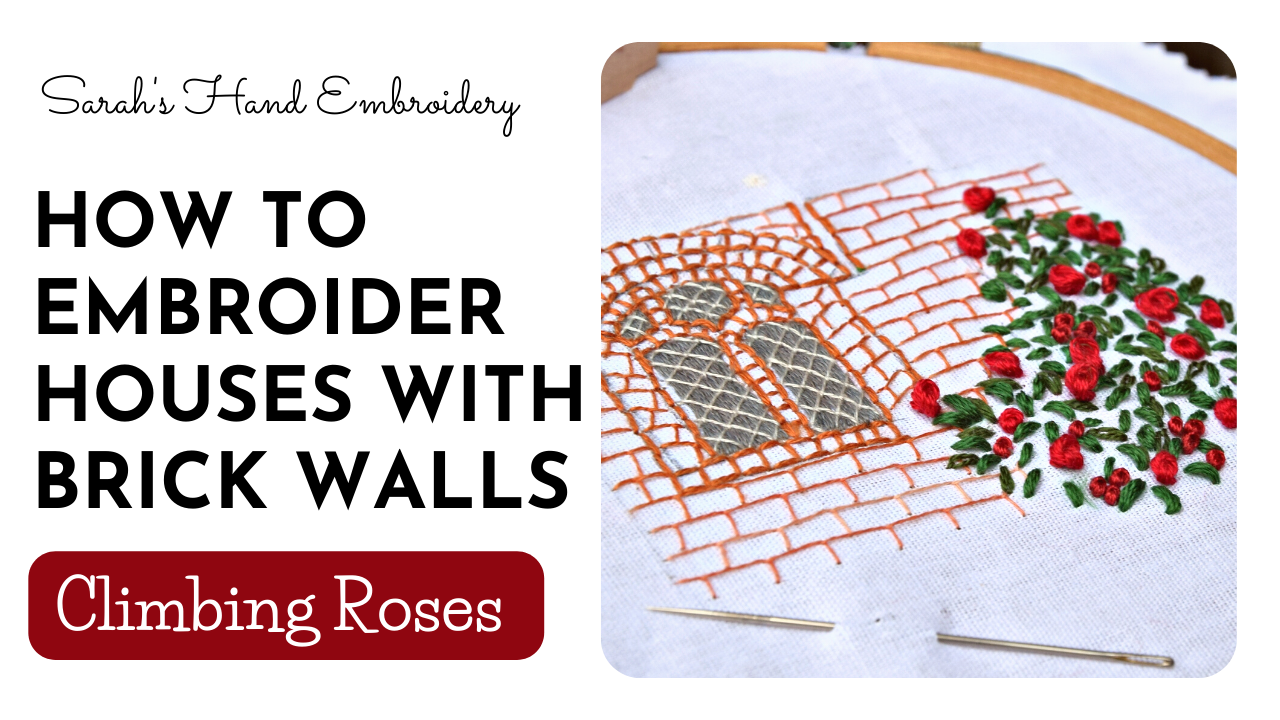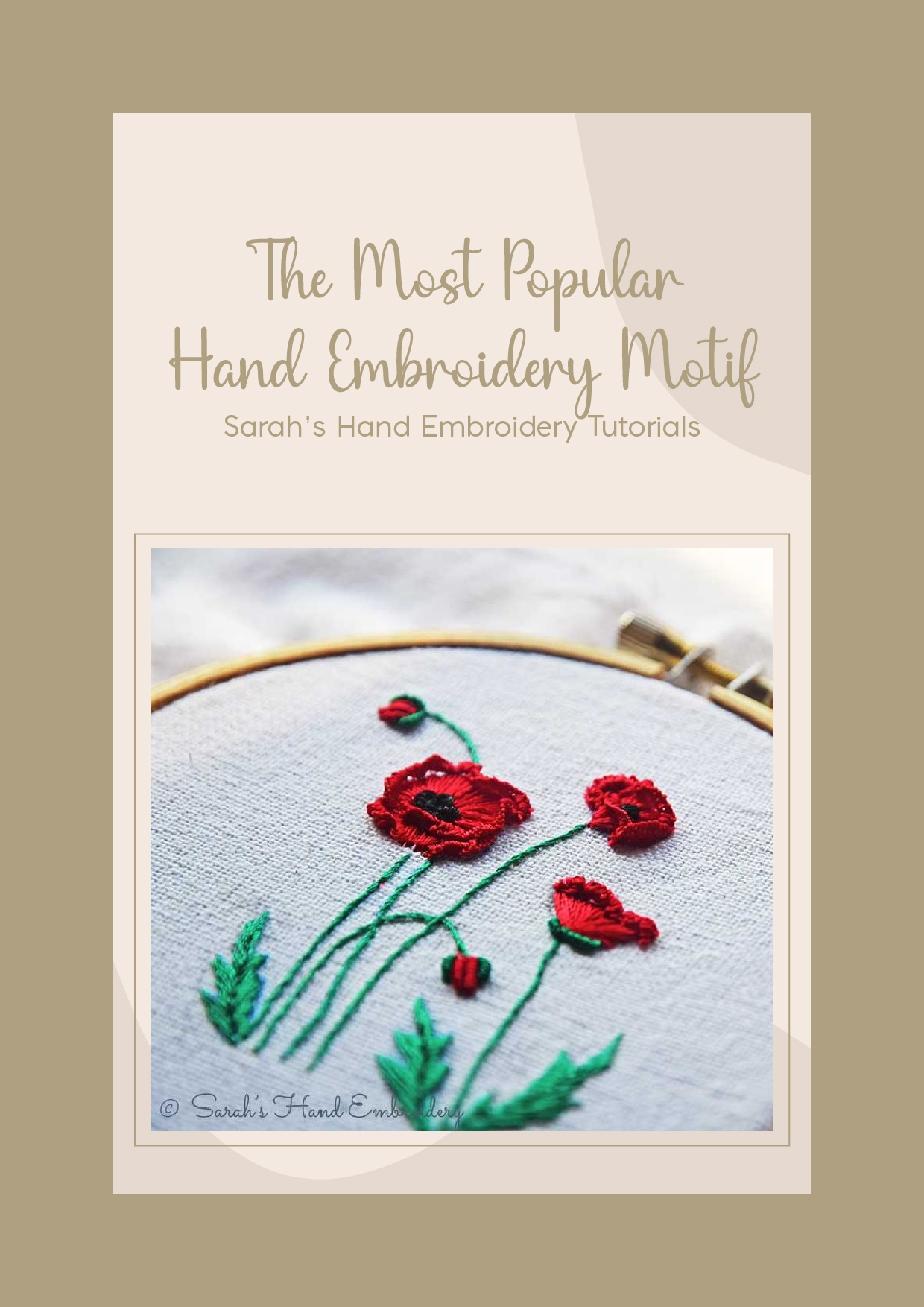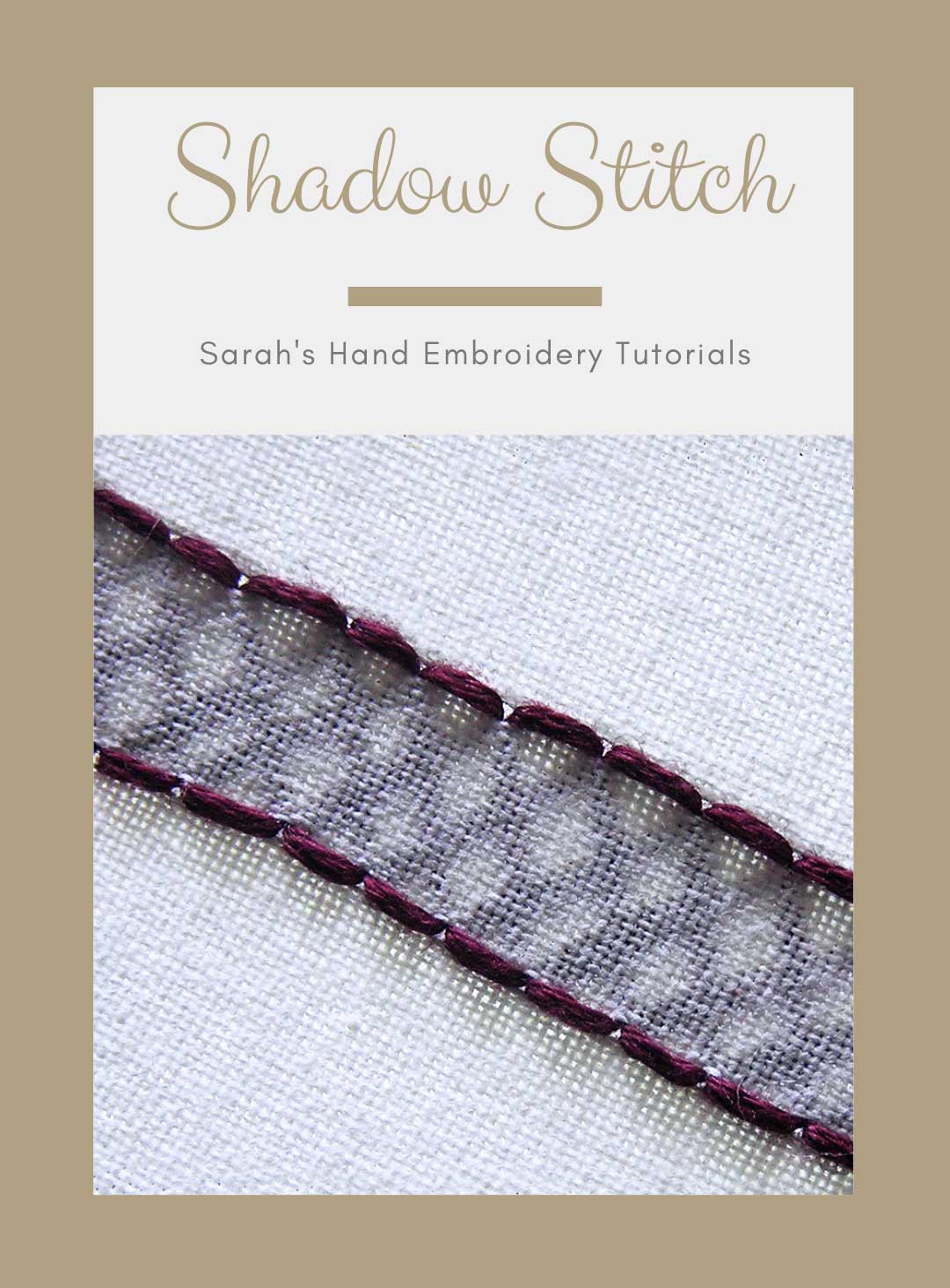
The Scottish Cretan stitch is a decorative variation of the Cretan stitch. Blocks of Cretan stitches are made to make a beautiful pattern for a border. The look can be varied by making the Cretan stitches bigger or smaller, or closed or open.
You need to know the Cretan stitch to be able to learn this variation.
 |  |
| Fig 1: Start by making a few Cretan stitches. In the illustration, I have a set of three stitches on either side. Now, take the needle under the stitches on the left side, without plucking the fabric below. | Fig 2: Now, turn around the needle and take the needle under the stitches on the right side, as shown. This finishes one ‘block’ of the Scottish Cretan stitch. Continue making such blocks of Cretan stitch and repeat the process. |
 | |
| Fig 3: A row of this stitch would look like this. I have used closed cretan stitch to do this row. |
 Sarah has been researching and sharing hand embroidery lessons for over 17 years, making it accessible to everyone around the globe.
Sarah has been researching and sharing hand embroidery lessons for over 17 years, making it accessible to everyone around the globe.





This is a fantastic resource. Thank you so much for taking the time to create it. I LOVE embroidery and this is going to be such a great site to learn a few new ones. I’ll definitely try this one out. Thanks again.
Thanks, Ann! Happy to know you are enjoying these pages. 🙂
Hi, Sarah. I have been practicing –and loving– Cretan stitch and variations. Here you have a tutorial (in Spanish) I just wrote on this useful stitch.
http://www.fronterad.com/?q=bitacoras%2Fmariatenorio%2Fpuntada-cretense-instrucciones-para-bordar-a-mano
I also share with you and your readers a picture of a doll where I used Knotted and Scottish Cretan stitch.
Thanks for your tutorials!

Sarah,
Thank you so much for your tutorials. I am learning so much. I have a question about the Scottish Cretan Stitch shown above. This may be a stupid question but you make three Cretan stitches and then do the passing under on each side and then make three more Cretan stitches, etc.? It looks like the three Cretan stitches are separated into little groups and then you leave a space before you do the next three, is that right?
Thank you.
Dear Deborah,
Leaving spaces between every three Cretan stitches is not a rule. You can always experiment by keeping them close or farther still. What matters is the technique: doing three stitches, then passing under them, then going for the next three. 🙂
Dear Sarah: its a pleasure to learn from your blog! I like to learn and practice new stitches and its variations and your material it’s very useful and easy to understand.
Thanks for your dedication 🙂
Greetings from Uruguay
Dear Paty,
So delighted to know that we have students from Uruguay too! 🙂 We are happy to know that you have been enjoying our pages and learning from it.
Dear Sarah,
I have learned so many new stiches from your blog.I love doing hand embroidery and your instructions are very helpful.Thank you .
Chhaya.
🙂 happy to know Chhaya.
Hi Sarah,
I just found this blog and have inspected it entirely. You have done a wonderful job and I appreciate it a lot! You’re very generous and your instructions seem quite easy to follow.
Thanks.
Irene
🙂 Thanks Irene. Happy to know that you have been enjoying our pages and learning from it.